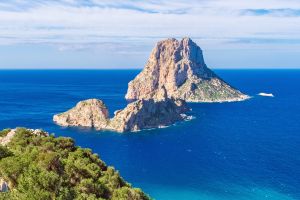Kenyan wildlife conservationists are doing their best to save the endangered northern white rhino, with only five left in the world.
Faced with poaching and habitat loss, conservationists hope modern breeding techniques can help preserve the species' genes before they are wiped out.
The northern white rhino's extinction crisis is heartbreaking. Najin, one of only five left in the world, has become a symbol of the endangered species.
Her fuzzy ears and chubby limbs exude an endearing innocence, yet it's clear her species are likely to disappear within our lifetime. To prevent that day from coming, conservationists are working hard to save the species.
M. Doyo is responsible for protecting the rare northern white rhinos at the Ol Pejeta Conservancy in Kenya. Doyo says the conflict has pushed the rhinos to the brink of extinction. They originally lived in the Garamba region of northern Congo, where tall grasses sheltered them from human eyes.
However, the reality is that internal problems in Congo have forced many locals to hunt rhinos for survival. Rhinos have become their only source of food, and many northern white rhinos have been slaughtered as a result, causing their numbers to plummet.
Poaching is also one of the main reasons for the sharp decline in rhino numbers, especially in Asia, where many people mistakenly believe that rhino horns have medicinal value, making them a precious commodity in the market.
Doyo describes the measures taken to protect the rhinos: for safety, they have to dehorn rhinos regularly to prevent poachers from killing them for their horns.
They use a gradual dehorning method, cutting off the horns bit by bit until the horns are completely removed. Although this protects the rhinos’ lives, it also shows how humans are struggling to resist the serious threat posed by poaching.
The number of northern white rhinos is declining rapidly. A rhino in the reserve died unexpectedly in October, and another at the San Diego Zoo in the United States died in mid-December.
Now, with only five northern white rhinos left in the world, their survival situation is becoming increasingly dire, and the responsibility to protect these precious lives is even more challenging.
Still, the story of the northern white rhino is not over yet. The world's last male northern white rhino, Sudan, is the last hope for conservationists. Sudan, 41, has missed several opportunities to reproduce, but scientists have not given up.
They plan to use artificial insemination to try to give the northern white rhino a new chance at survival. The plan involves attempting to get a young female northern white rhino pregnant or using a southern white rhino as a surrogate mother.
If that fails, the conservation team may consider interbreeding, where northern white rhinos mate with southern white rhinos to expand the gene pool and continue the species’ bloodline.
Richard Vigne of the Ol Pejeta Conservancy explained that their goal is to preserve the genetic traits of the northern white rhino, whether as a species or a subspecies so that it can survive in Central Africa and face challenges such as disease and habitat loss.
By hybridizing with southern white rhinos, these genetic traits can continue to be passed down. The conservation team hopes that one day in the future, even if it takes hundreds of years, there will still be a chance to bring northern white rhinos back to the African landscape.
Although this vision seems distant, conservationists have no better option at the moment. They know this may be the last chance to save the northern white rhino.
Even if the hope is slim, they refuse to give up and are striving to preserve the genes of this species, creating the possibility of reintroducing northern white rhinos in the future.
The fate of the northern white rhino has become a reflection of global wildlife conservation. Their survival crisis reminds us that many rare species around the world face similar threats.
Poaching, habitat loss, and human conflict are leading species to extinction at an alarming rate. If urgent action isn’t taken, the tragedy of the northern white rhino may be repeated with other species.


